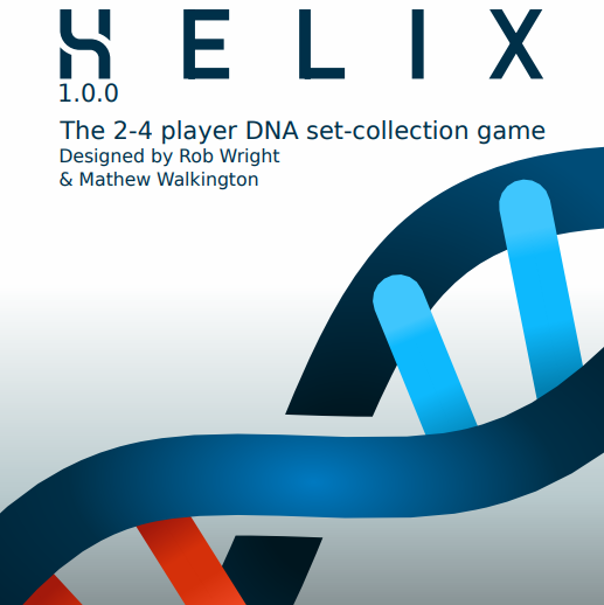The year is 1990 and the human genome project has just begun. Race against your fellow scientists to be the fist to decode the human genome in this tactical, fast paced card game. Use the power of DNA to form Codons and perform extra actions whilst creating DNA Genes to score points. Will you make Genes to get ahead of the competition or chain dizzying combos to leave them in the dust.
Players: 2 - 4
Play time: 20 - 30 mins
Ages: 12+
Instructional Video Coming Soon
Development Diary
Concept
This is the first game we designed as a duo and to kick us off we attempted to take part in a 24-hour design challenge with the prompt of letters. We never managed to submit anything for the challenge, but it inspired us to design a game about DNA. There would be two mechanics of the game, a trick building aspect from cards with A’s,T’s,C’s and G’s (like poker) and a combo mechanic. Players play cards from there hand into a sequence in front of them to make hands of cards and win points, these cards also combined to allow the player to do additional actions that turn.
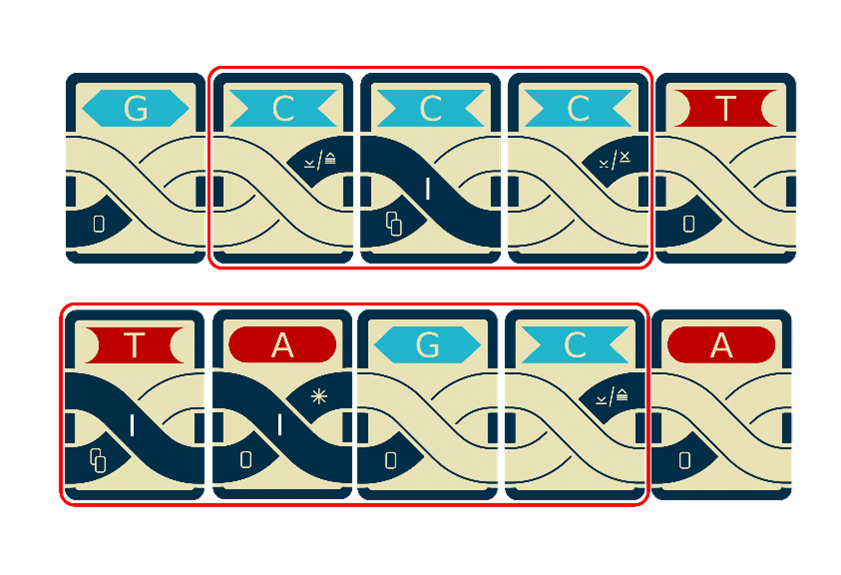
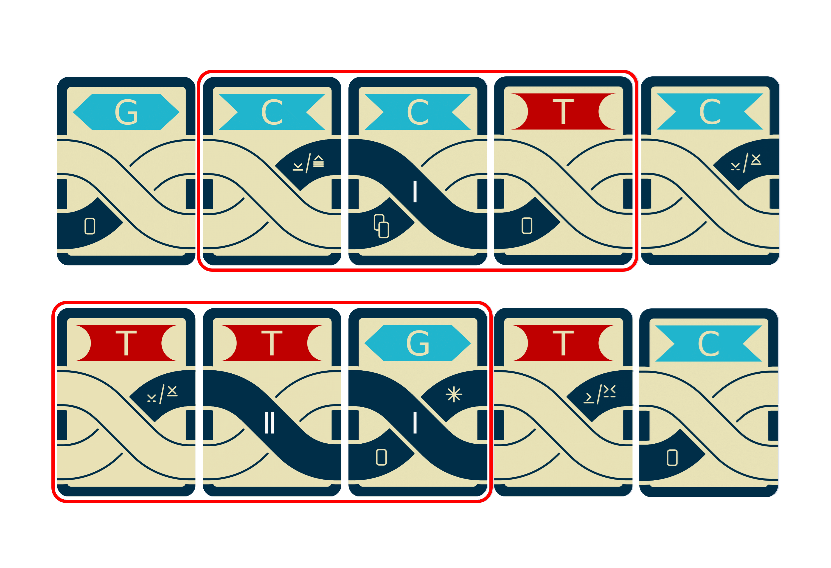
To test out this idea we made some very rough prototypes from scrap paper. We found that the mechanic was interesting but the rough and ready cards we played with made it difficult to follow the action and spot opportunities. The first combo ideas were actions like moving cards from one end of a sequence to another, inserting cards and drawing cards, whilst interesting the game seemed to lack player interaction in this early prototype.
Time for a more detailed prototype!!
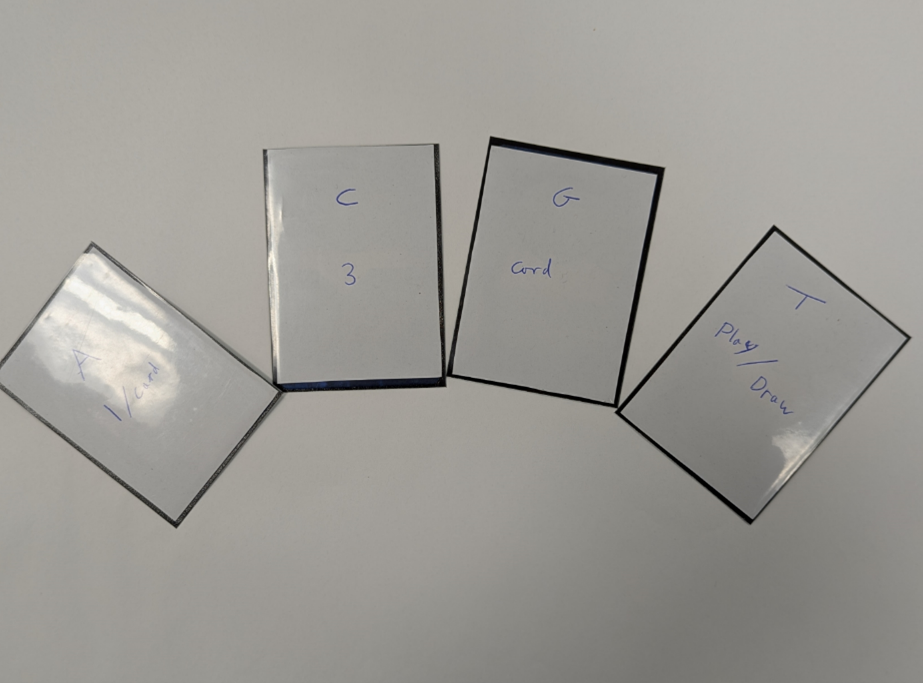
Prototype
For our first detailed prototype we rethought the combo system creating action, number and object strings that would allow players to perform more actions. We separated the position of each string component type and fit them into a pattern so that it was clearer when a combination had been made. We also added more actions that could be performed when a combination was made such as remove and swapping cards which allowed players to alter each other’s sequences. Since we had a more complete game, we started to think about how we would keep score. We landed on taking the cards scored in a trick and adding them to a points pile, this removed the cards from the sequence keeping the game moving and served as a convenient counter.

We found that repeated activation of combinations every turn (like an engine builder) would be to powerful and allow you to lock an opponent out of the game, so we needed some method a tracking when a combination had been used that turn so we settled on tucking the first card in the combination under the next card along, preventing the combination from being used again until either of the two cards are moved.

This was a significant increase in card design and game rules detail, and we were excited to test out our game, so we did plenty of play testing to find gaps in the design. With all this new knowledge from playtesting we started to refine the game.
Refinement
Through lots of play testing, we gathered a list of key areas of improvement for the game; difficult to understand rules, ambiguous rules and weak theming. We also noted some mechanical challenges such as difficulty managing used card combos, poor card balance (some cards were not as good as others) and the method of using up a combination of cards to prevent infinite loops was clunky and didn’t work well alongside existing rules.
With all these points in mind we went through many iterations of the card and deck design. Firstly, we focused on theming, name conventions and the look of the cards. We decided to name the trick building mechanic “Genes” to reflect how human DNA is made up of sequenced strands of DNA bases (A,T,C,G), Secondly, we named the combo mechanics hat is achieved from combining cards in the sequence “Codons” this reflects codons in human DNA that are sequences of proteins that give instructions. To fix the clunky method of using combos we lent on the theming of the game, each card was given 2 bases (A / T , T / A , C / G, G / C) one at the top and one at the bottom of the card this change allowed the design to better resemble DNA base pairs and as a bonus when a action card is used it can now be spun 180 degrees to prevent the codon from being used again a much more usable system with strong links to the brief. To enable the spinning of cards, fit two bases on each card and improve readability we redesign the card art and symbols opting to use a more obvious helix design that formed a solid pattern when a set of codon components were combined correctly.
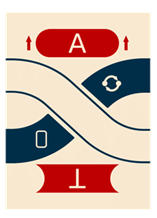
With newly designed mechanics and cards we began to balance the cards and speed up the game. We made sure all cards have either an action and card, a number and action or a number and card, this meant there were more opportunities to activate codons per hand. We determined that actions having the greatest influence over the game were the strongest components of cards and combined them only with small numbers, as the card codon component has little influence over the game when combined with a number they were assigned high values. These changes helped to make a more even distribution of utility across all the cards in the deck.
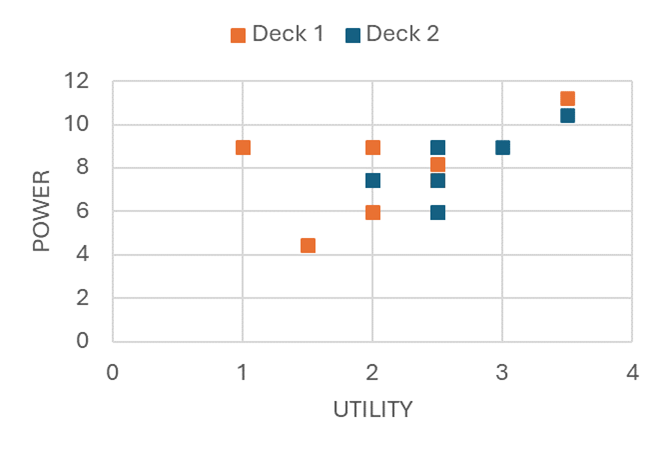
Finaly, we went through many iterations of the rules changing the format to be more readable and including player reference cards. After all this work we arrived at our final version of the game.
Final Release
This is it our first ever game !!
After some final tweaks to the rules, card designs and game pacing we are finally here. We have designed a fold box version of the game that you can buy from The Game Crafter or a print and play version that you can purchase from PnP Arcade. We really enjoyed our first experience of making a game and hope you will love playing it.
